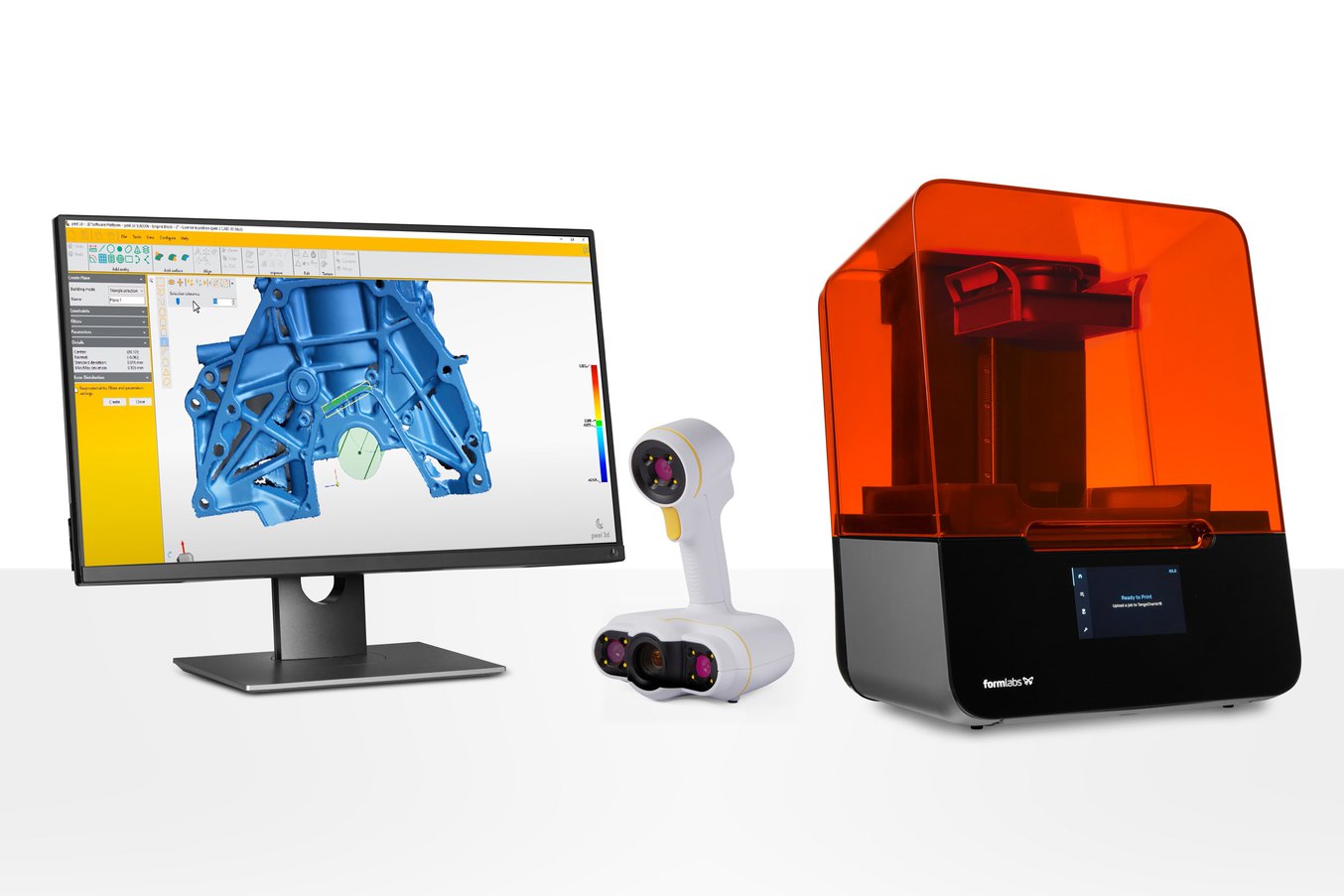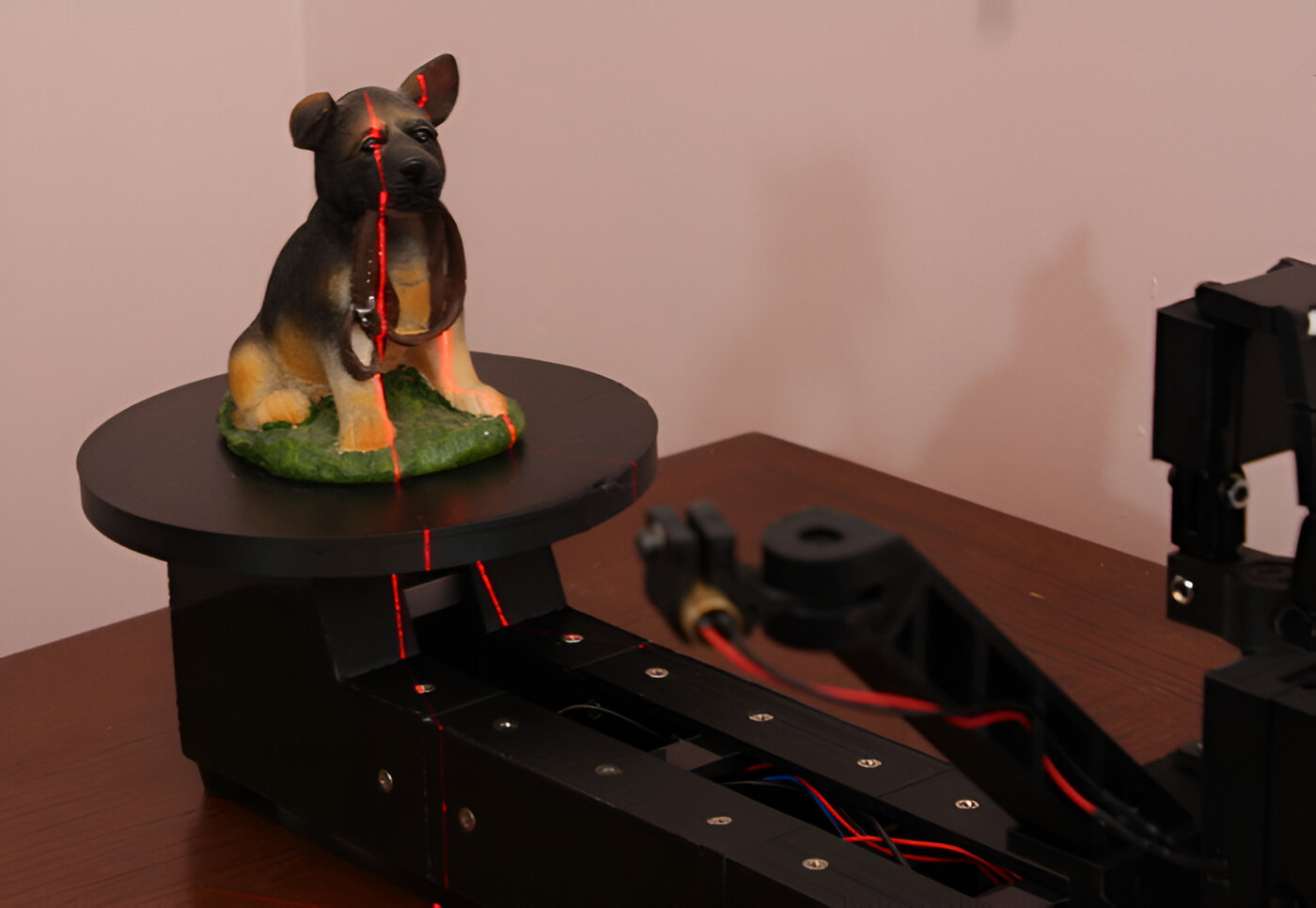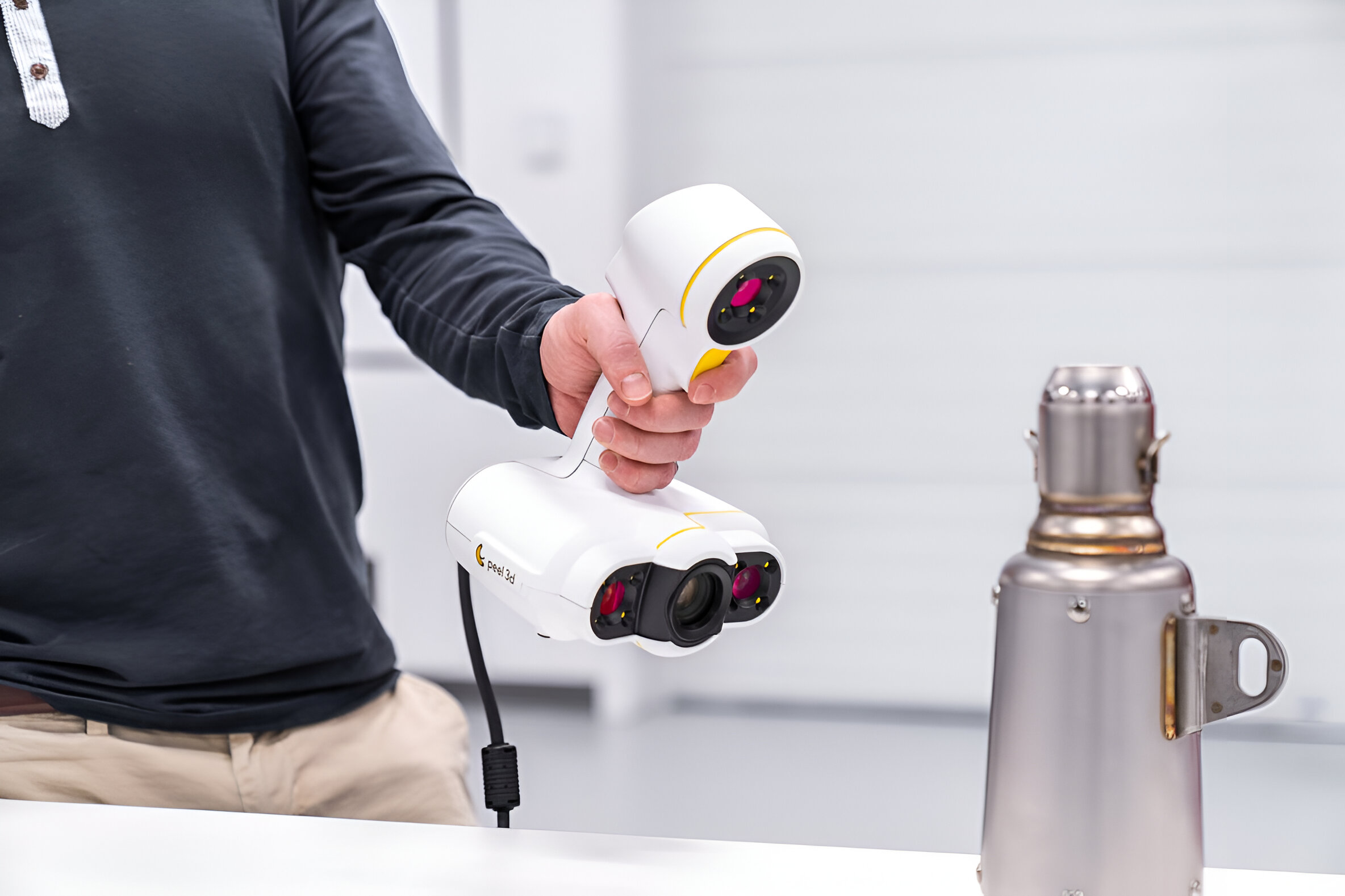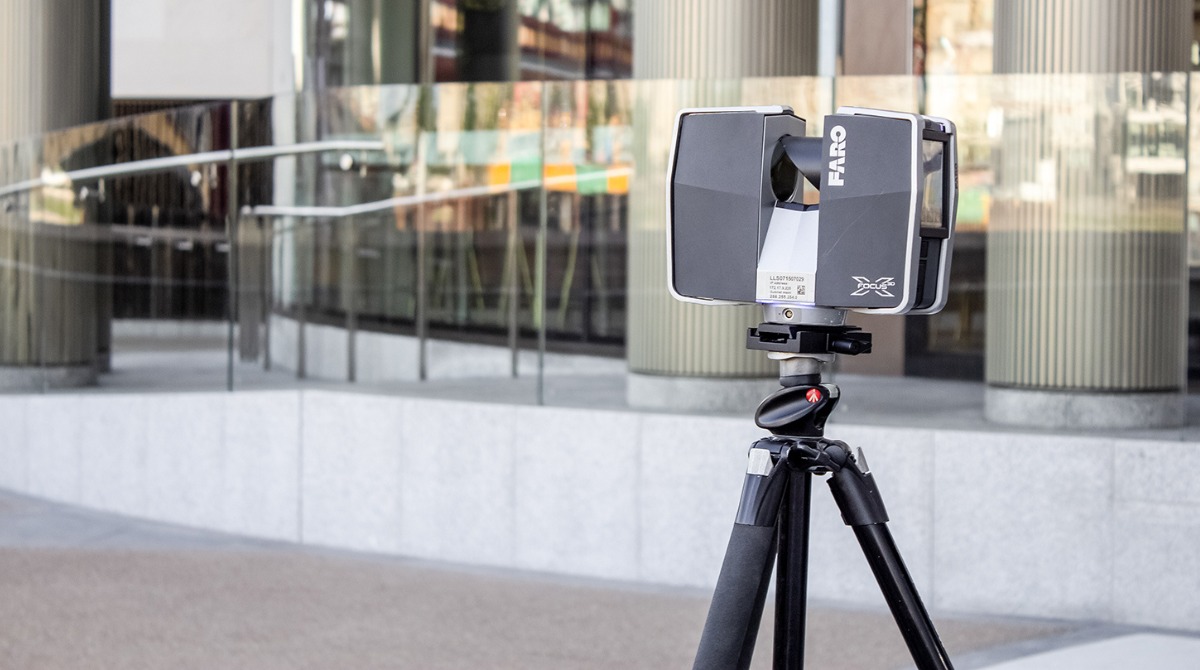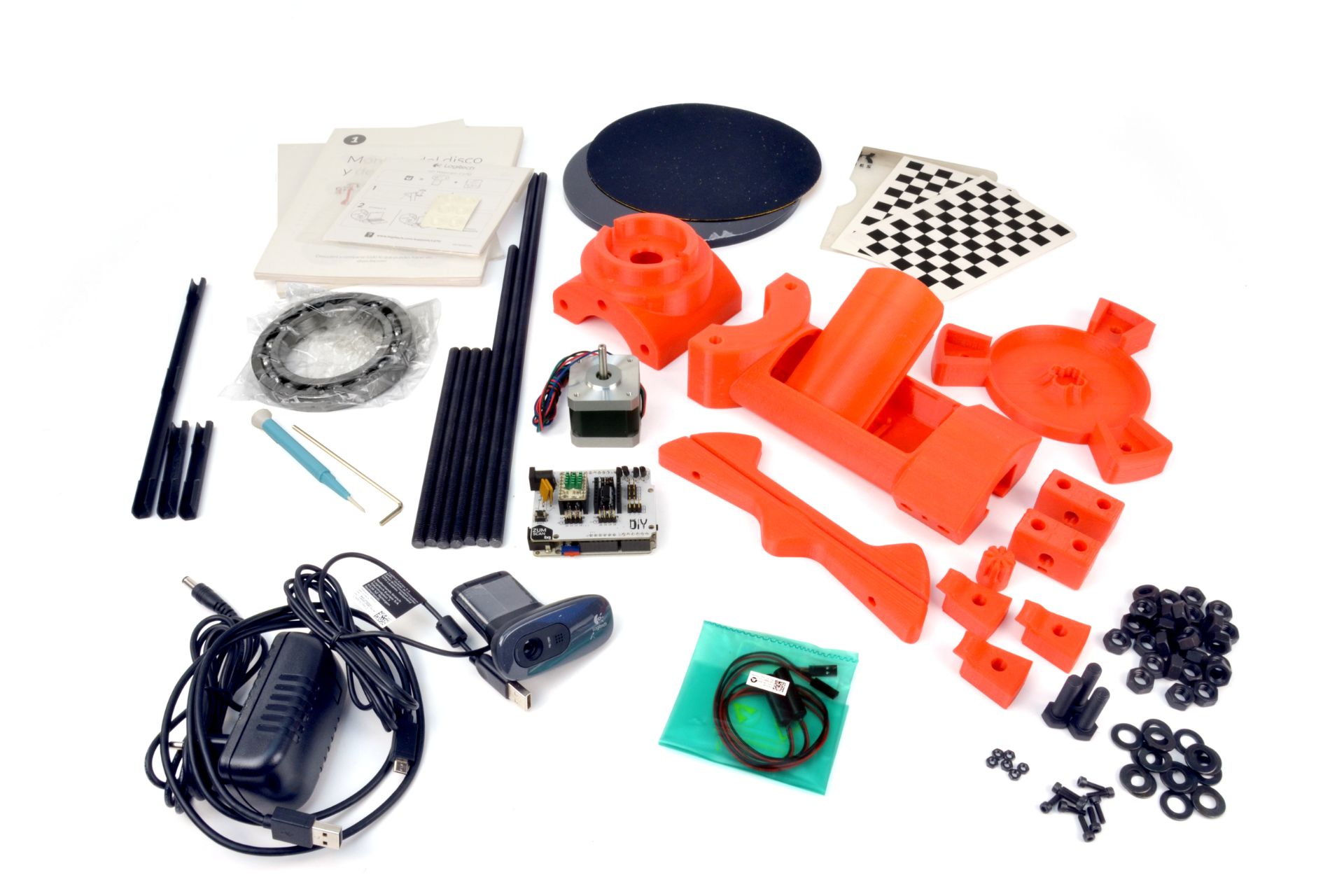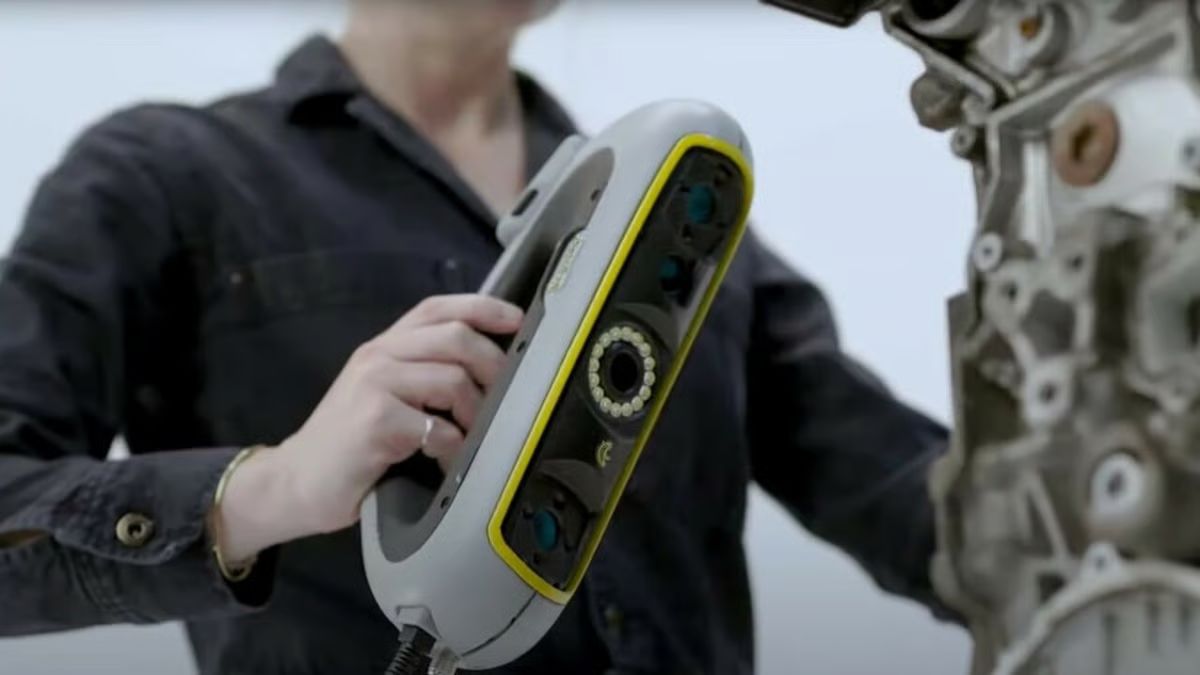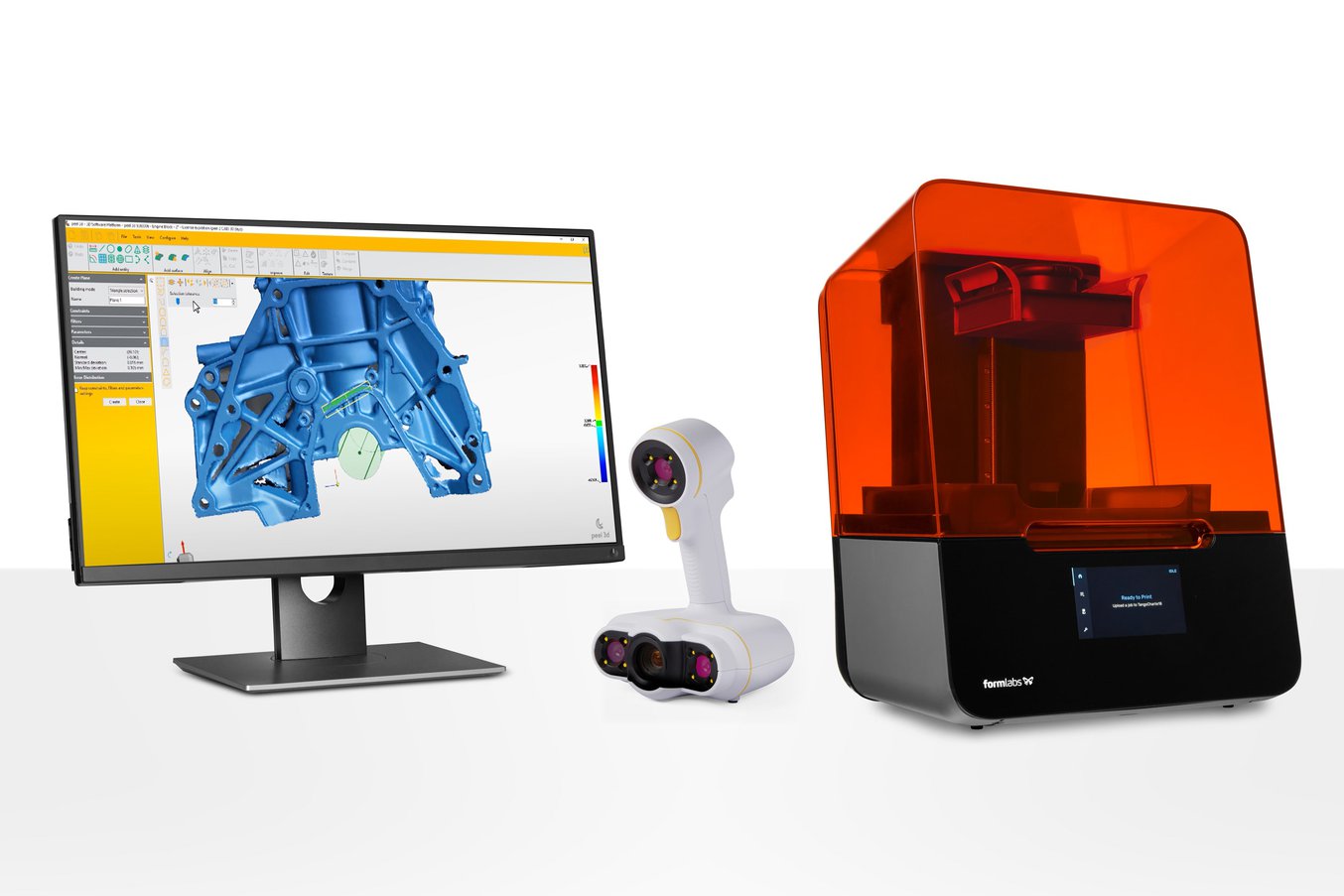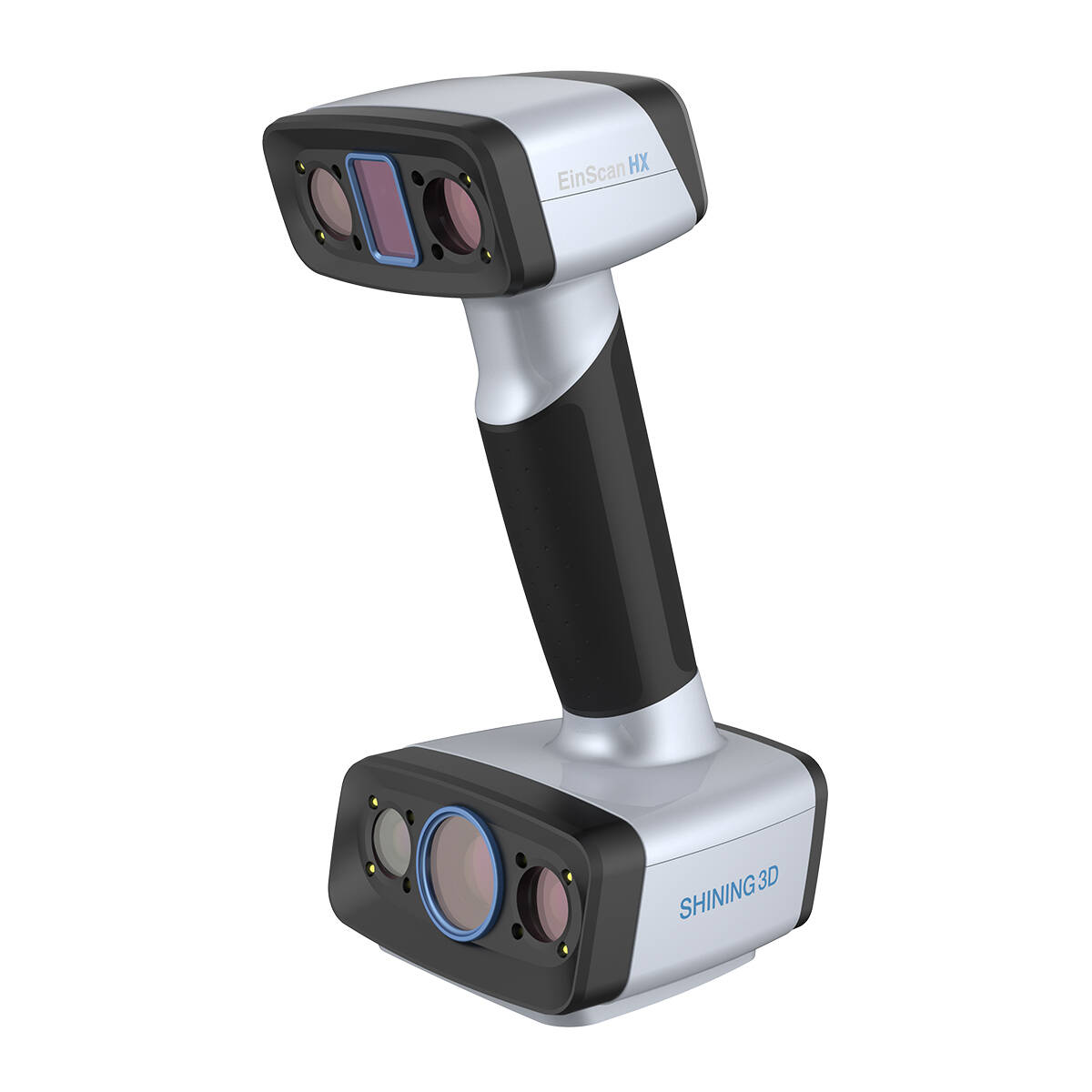Introduction
Welcome to the world of 3D scanning! With groundbreaking advancements in technology, 3D scanners have become increasingly popular tools for various industries and applications. Whether you’re an artist, a designer, or an engineer, investing in the right 3D scanner can greatly benefit your work and projects. However, with a plethora of options available in the market, finding the perfect 3D scanner can be a daunting task.
In this article, we will guide you through the process of choosing the ideal 3D scanner for your needs. We will discuss the factors that you should consider before making a purchase, the different types of 3D scanners available, popular brands, and their specifications. By the end of this article, you will have a better understanding of the options available and be equipped with the knowledge to make an informed decision.
3D scanners are devices that capture the physical shape and appearance of objects, converting them into digital models. These models can then be used for various purposes such as 3D printing, reverse engineering, virtual reality, and more. They offer a non-invasive and efficient way to capture objects in three dimensions, allowing for accurate measurements, detailed visuals, and precise replication of physical objects.
When it comes to choosing a 3D scanner, there are several factors you should consider. These factors include the intended use, level of precision required, size and complexity of the objects you want to scan, budget, ease of use, software compatibility, and portability. Understanding these factors will help you narrow down your options and find the 3D scanner that best fits your specific requirements.
Before we delve into the different types of 3D scanners available, it’s important to note that there is no one-size-fits-all solution. Each type of scanner has its own strengths and limitations, and the ideal choice depends on your specific needs and budget. Whether you’re looking for a handheld scanner for on-the-go scanning, a desktop scanner for small objects, or an industrial-grade scanner for large-scale projects, we will explore the options available.
Factors to Consider When Buying a 3D Scanner
Before investing in a 3D scanner, it’s essential to consider several key factors to ensure you select the right device for your specific needs. Here are some important factors to keep in mind:
Intended Use: Determine how you plan to use the 3D scanner. Are you scanning small objects for 3D printing, capturing detailed textures for digital art, or conducting industrial inspections? Different scanners excel in different applications, so understanding your intended use is crucial.
Precision and Accuracy: Consider the level of precision and accuracy required for your work. Higher precision scanners will provide more detailed and accurate models, but they may come with a higher price tag. Evaluate how precise your scans need to be and choose a scanner that matches your requirements.
Object Size and Complexity: Think about the size and complexity of the objects you plan to scan. Handheld scanners are more suitable for smaller objects with intricate details, while desktop or industrial scanners are better suited for larger and more complex objects.
Budget: Determine your budget for the 3D scanner. Prices can vary significantly depending on the type and capabilities of the scanner. It’s important to strike a balance between your budget and the desired features and performance.
Ease of Use: Consider the ease of use and learning curve associated with the scanner. Some scanners are more user-friendly with intuitive interfaces and streamlined workflows, while others may require more expertise to operate effectively. Identify your level of technical proficiency and choose a scanner that aligns with your skillset.
Software Compatibility: Check if the scanner is compatible with the software you plan to use for post-processing and modeling. Some scanners come with proprietary software, while others may have more compatibility with popular 3D modeling software. Ensure that the scanner’s software is compatible with your preferred workflow.
Portability: Evaluate the portability of the scanner if you require the flexibility to scan objects at different locations. Handheld scanners are typically more portable and easier to transport, while desktop or industrial scanners may be bulkier and less portable.
By considering these factors, you can narrow down your options and select a 3D scanner that meets your specific requirements. Keep in mind that finding the perfect scanner may involve making trade-offs between different features and capabilities. Take the time to research and compare different models, read user reviews, and consult with experts in the field to make an informed decision.
Types of 3D Scanners
There are several types of 3D scanners available in the market, each with its own unique characteristics and applications. Understanding the different types will help you determine which one is best suited for your scanning needs. Here are the main types of 3D scanners:
- LiDAR Scanners: LiDAR (Light Detection and Ranging) scanners use laser light to measure distances and create precise 3D models. These scanners are often used in fields such as architecture, archaeology, and environmental mapping, where capturing large-scale environments or terrains is required.
- Structured Light Scanners: Structured light scanners project a pattern of light onto the object being scanned and capture the distortions in the light pattern to create a 3D model. These scanners are known for their high accuracy and are commonly used in applications such as reverse engineering, quality control, and dental scanning.
- Photogrammetry Systems: Photogrammetry systems utilize multiple cameras or images taken from different angles to reconstruct a 3D model. By analyzing the parallax between the images, the scanner can accurately capture the shape and geometry of the object. These systems are popular for capturing objects with intricate details, such as sculptures or artifacts.
- Multispectral 3D Scanners: Multispectral 3D scanners combine 3D scanning technology with multispectral imaging, allowing for the capture of both 3D geometry and color information. These scanners are widely used in fields such as cultural heritage preservation, art reproduction, and medical imaging.
- Time of Flight (ToF) Scanners: ToF scanners measure the time it takes for a light signal to bounce back from the object, allowing for the calculation of distance and creation of a 3D model. These scanners are often used in robotics, autonomous vehicles, and augmented reality applications, where real-time depth perception is essential.
Each type of 3D scanner has its own strengths and limitations, and the ideal choice depends on the specific requirements of your project. Consider factors such as the size of the objects you want to scan, the level of detail and accuracy needed, and the environment in which you will be scanning. It’s also important to consider your budget and the learning curve associated with each type of scanner.
By understanding the different types of 3D scanners and their applications, you can make a more informed decision and select the scanner that best suits your needs. Remember to thoroughly research each type, read user reviews, and consult experts in the field to ensure you choose the right 3D scanner for your specific scanning requirements.
Handheld 3D Scanners
Handheld 3D scanners are compact, portable devices that allow for easy and flexible scanning of objects from various angles. These scanners are popular among artists, designers, and professionals who require on-the-go scanning capabilities. Here are some key features and benefits of handheld 3D scanners:
- Portability: One of the main advantages of handheld 3D scanners is their portability. They are lightweight and easy to carry, making them ideal for scanning objects in different locations or on-site. Whether you’re scanning artwork at a gallery or capturing real-world objects for virtual reality applications, handheld scanners offer the flexibility you need.
- Flexibility: Handheld scanners allow for a wide range of scanning possibilities. You can easily capture objects of varying sizes and shapes by moving around the object and scanning from different angles. This flexibility is especially useful when scanning complex or hard-to-reach areas.
- User-Friendly: Handheld scanners are designed to be user-friendly and easy to operate. They typically come with intuitive software interfaces that guide users through the scanning process. Even those with limited technical knowledge can quickly learn how to use handheld scanners effectively.
- Real-Time Feedback: Many handheld scanners provide real-time feedback during the scanning process. This allows users to monitor the quality and accuracy of the scan as they move the scanner around the object. Real-time feedback helps ensure that scans are captured properly and any issues can be addressed immediately.
- Wide Range of Applications: Handheld 3D scanners are versatile tools that have applications across various industries. They are commonly used in product design, architecture, heritage preservation, digital art, and even in fields like medicine and forensics. The ability to capture objects in three dimensions with ease opens up a world of possibilities for creative and technical endeavors.
- Affordability: Handheld 3D scanners come in a range of prices, making them more accessible to a wider audience. There are budget-friendly options available for hobbyists and beginners, as well as higher-end models with advanced features for professionals. Assess your budget and desired level of performance to find a handheld scanner that meets your specific needs.
While handheld 3D scanners offer convenience and versatility, they may have limitations in terms of resolution and accuracy compared to larger, stationary scanners. Consider the level of detail and precision required for your projects before opting for a handheld scanner. Additionally, be aware that handheld scanners may be more time-consuming when scanning larger objects due to the need to capture multiple scans and align them properly.
Overall, handheld 3D scanners are an excellent choice for those who require flexibility, portability, and ease of use. Whether you’re a designer wanting to create digital models of real-world objects or an artist looking to incorporate 3D scanning into your creative process, handheld scanners can help you bring your vision to life.
Desktop 3D Scanners
Desktop 3D scanners are powerful devices designed to capture highly detailed, high-resolution scans of smaller objects. These scanners are commonly used in industries such as engineering, manufacturing, and product design. Here are some key features and benefits of desktop 3D scanners:
- Precision and Accuracy: Desktop scanners are known for their high precision and accuracy. They can capture intricate details of small objects with great precision, making them ideal for applications where accuracy is crucial, such as quality control or reverse engineering.
- High Resolution: Desktop scanners offer high-resolution scanning capabilities, allowing for the capture of fine details and intricate textures. With the ability to capture up to sub-millimeter accuracy, desktop scanners ensure that even the smallest features of an object are faithfully reproduced in the digital model.
- Stability and Consistency: Desktop scanners are typically stationary devices that provide a stable scanning environment. This stability minimizes the risk of movement or vibrations that can affect the scan quality, ensuring consistent and reliable results. This makes desktop scanners suitable for applications that require repeatable and accurate scans.
- Efficiency: Desktop scanners often come equipped with turntable platforms, automatic alignment features, and dedicated scanning software. These features streamline the scanning process, allowing for faster and more efficient scanning of multiple objects. Desktop scanners are an excellent choice for projects that require a high volume of scans.
- Software Integration: Many desktop scanners offer seamless integration with popular 3D modeling software. This integration simplifies the post-processing workflow, allowing for easy alignment, mesh processing, and model refinements. The compatibility between the scanner and software enhances the overall scanning experience and productivity.
- Flexibility in Object Size: While desktop scanners are designed for smaller objects, some models offer flexibility in object size. The scanning volume can vary, allowing for the capture of objects of different dimensions. Consider the size range required for your projects and choose a desktop scanner that suits your needs.
Desktop 3D scanners are a valuable tool for professionals who require high-precision and high-resolution scans. They are commonly used in industries such as jewelry design, dental applications, industrial design, and small-scale manufacturing. However, it’s important to consider the specific requirements of your projects and the limitations of desktop scanners, which may not be suitable for scanning larger objects or environments.
When investing in a desktop scanner, consider factors such as scanning speed, resolution, ease of use, software compatibility, and budget. Research different models, read reviews, and consult experts to choose a desktop 3D scanner that aligns with your specific needs and helps you achieve outstanding results.
Industrial 3D Scanners
Industrial 3D scanners are robust and highly accurate devices designed for large-scale scanning applications. These scanners are commonly used in industries such as automotive, aerospace, and architecture, where precision, speed, and durability are crucial. Here are some key features and benefits of industrial 3D scanners:
- Large-Scale Scanning: Industrial scanners are designed to handle scanning of large objects or environments. They can capture the intricate details of objects that are several meters in size, making them ideal for applications such as building inspections, reverse engineering of complex machinery, or scanning large sculptures.
- High Precision and Accuracy: Industrial scanners offer exceptional precision and accuracy. With advanced technology and high-resolution sensors, they can capture even the smallest details and dimensions with great accuracy. This precision is crucial in industries that require precise and reliable measurements for quality control or engineering analysis.
- Fast Scanning Speeds: Industrial scanners are built for efficiency, often featuring high-speed data acquisition capabilities. This allows for rapid scanning of large objects or surfaces without compromising on accuracy. Industrial scanners can save time and increase productivity by quickly capturing detailed 3D models.
- Durability and Ruggedness: Industrial scanners are designed to withstand harsh environments and heavy usage. They are built with robust materials and engineered to ensure reliability and longevity, even in demanding industrial settings. This durability makes them suitable for on-site applications and scanning in challenging conditions.
- Advanced Features: Industrial scanners often come equipped with advanced features such as automatic alignment, real-time feedback, and multi-sensor capabilities. These features enhance the scanning process, allowing for faster, more accurate, and more efficient scans. Additional functionalities, such as color texture capture or high dynamic range (HDR) imaging, further expand the scanning capabilities.
- Integration with Workflows: Industrial scanners are designed to seamlessly integrate with existing industrial workflows. They offer compatibility with industry-standard software and file formats, making it easier to incorporate the 3D scans into the design, manufacturing, or quality control processes. This integration enhances efficiency and collaboration within industrial environments.
Industrial 3D scanners are a substantial investment and are best suited for professionals with specific industrial needs. They are commonly used in automotive design, aerospace engineering, architecture, and other industries that require precise measurements and complex 3D modeling. Consider your industry requirements, the size of the objects you need to scan, and the desired level of accuracy before investing in an industrial scanner.
When choosing an industrial 3D scanner, factors such as scanning speed, accuracy, ease of use, software compatibility, and support play a crucial role. It’s essential to thoroughly research different models, read reviews, and consult experts to select an industrial scanner that meets your unique needs and empowers you to achieve outstanding results in your respective industry.
Popular 3D Scanner Brands
When it comes to 3D scanning, there are several well-established and reputable brands that offer a wide range of high-quality scanners. These brands have earned recognition for their innovation, accuracy, and reliability. Here are some popular 3D scanner brands in the market:
- Artec: Artec is known for producing state-of-the-art 3D scanning solutions for various industries. Their scanners are highly regarded for their accuracy, speed, and ability to capture intricate details. Artec offers a range of scanners, from handheld to desktop models, to cater to different scanning needs.
- Faro: Faro specializes in industrial-grade 3D scanners used in sectors such as manufacturing, construction, and engineering. Their scanners are known for their exceptional accuracy and versatility, with options ranging from handheld devices to large-scale metrology solutions.
- 3D Systems: 3D Systems offers a variety of 3D scanning solutions, including handheld and fixed-mount scanners. They provide reliable and high-resolution scanners suitable for applications in design, healthcare, aerospace, and more.
- Trimble: Trimble focuses on providing cutting-edge 3D scanning technology for the architecture, engineering, and construction industries. Their scanners are renowned for their accuracy, precision, and ability to capture detailed as-built documentation of structures and sites.
- Creaform: Creaform is a leader in portable 3D measurement technologies. They offer a range of handheld and portable scanners that deliver high-quality scans with ease of use. Creaform scanners are commonly used in industries such as automotive, aerospace, and art preservation.
- Shining 3D: Shining 3D is a global industry leader that provides a wide range of 3D scanning solutions. They offer affordable and user-friendly scanners, ranging from handheld to desktop models, suitable for various applications such as 3D printing, reverse engineering, and education.
These are just a few of the many reputable 3D scanner brands available in the market. Each brand offers unique features, specifications, and price ranges. It’s important to consider your specific scanning requirements, budget, and the level of support provided by the manufacturer before making a decision.
When evaluating 3D scanner brands, factors to consider include the scanner’s accuracy, resolution, scan speed, ease of use, compatibility with software, and customer support. Reading user reviews, comparing technical specifications, and seeking recommendations from professionals in your industry can help you make an informed decision and choose the right 3D scanner brand that aligns with your specific needs.
Budget-Friendly 3D Scanners
3D scanning technology has become more accessible in recent years, and there are now budget-friendly options available for those who are starting out or have limited budgets. While budget-friendly 3D scanners may not offer all the advanced features of higher-priced models, they still provide a great entry point into the world of 3D scanning. Here are some budget-friendly 3D scanner options worth considering:
- EINSCAN: EINSCAN offers a range of affordable 3D scanning solutions suitable for various applications. Their handheld scanners provide good accuracy and ease of use, making them a popular choice for beginners and enthusiasts.
- XYZprinting: XYZprinting offers a range of desktop 3D scanners at affordable price points. These scanners are ideal for capturing small objects with decent accuracy and are well-suited for hobbyists, educators, and small-scale projects.
- Structure Sensor: The Structure Sensor is an affordable depth-sensing 3D scanner that attaches to your tablet or smartphone. It provides a portable and cost-effective solution for scanning small objects or environments and is often used in augmented reality and virtual reality applications.
- Shining 3D Einstart-C: The Shining 3D Einstart-C desktop scanner offers an affordable entry-level option for those looking to explore 3D scanning. It provides decent accuracy and ease of use, making it a suitable choice for beginners or low-budget projects.
- DAVID SLS-3: The DAVID SLS-3 is a structured light 3D scanner that provides good accuracy at an affordable price. It is often used in applications such as 3D printing, reverse engineering, and product development.
- MicroScribe: MicroScribe offers digitizing solutions that are versatile, cost-effective, and well-suited for 3D scanning small to medium-sized objects. They provide manual arm-based systems that integrate with popular 3D modeling software.
These budget-friendly 3D scanners are a great option for hobbyists, educators, and those who are starting to explore the world of 3D scanning. While they may have limitations in terms of accuracy or scanning volume compared to higher-end models, they still provide an opportunity to experiment with 3D scanning without breaking the bank.
When considering a budget-friendly 3D scanner, be mindful of your specific needs and expectations. Evaluate factors such as scanning accuracy, ease of use, software compatibility, and the intended applications for the scanner. Reading reviews and seeking recommendations from other users can also help you make an informed decision and find a budget-friendly 3D scanner that suits your needs.
Mid-Range 3D Scanners
If you’re looking for a 3D scanner with more advanced features and higher performance than budget-friendly options, but without breaking the bank, mid-range 3D scanners are worth considering. These scanners offer a good balance between affordability and functionality, making them suitable for a wide range of applications. Here are some popular mid-range 3D scanners:
- EinScan Pro 2X: The EinScan Pro 2X is a versatile handheld 3D scanner that offers high accuracy and multiple scanning modes. It allows for both handheld and fixed scanning, making it suitable for a variety of objects and applications.
- ScanTech iReal2E: The ScanTech iReal2E is a structured light 3D scanner that provides high-precision scanning at an affordable price. It offers ease of use and good scanning accuracy for applications such as 3D modeling, reverse engineering, and quality control.
- DAVID SLS-3 HD: The DAVID SLS-3 HD is an upgraded version of the SLS-3 scanner, offering higher resolution and improved scanning capabilities. It is suitable for applications that require detailed and accurate 3D scans, such as product design, heritage preservation, and engineering analysis.
- Shining 3D EinScan Pro HD: The EinScan Pro HD is a handheld 3D scanner that provides high accuracy and resolution. It offers versatility with multiple scanning modes and is compatible with CAD software, making it suitable for a range of applications, including reverse engineering, 3D printing, and animation.
- Faro Focus S: Faro Focus S scanners offer high-accuracy laser scanning technology at a more affordable price point. These scanners are well-suited for applications such as construction, architecture, and surveying, where capturing detailed 3D measurements is essential.
- Creaform Go!SCAN: The Creaform Go!SCAN series offers handheld 3D scanning solutions with high accuracy and ease of use. These scanners are used in industries such as automotive, aerospace, and arts and culture, providing reliable and precise 3D scanning results.
Mid-range 3D scanners are suitable for professionals, educators, and small to medium-sized businesses that require higher accuracy and advanced features within a reasonable budget. They offer improved scanning capabilities compared to budget-friendly models while still being more affordable than high-end scanners.
When considering a mid-range 3D scanner, factors to consider include scanning accuracy, resolution, ease of use, software compatibility, and additional features specific to your application needs. It’s important to strike a balance between the desired performance and your budget. Researching and comparing different mid-range models, reading user reviews, and seeking expert advice can help you make an informed decision and find a mid-range 3D scanner that suits your needs.
High-End 3D Scanners
For professionals and industries that require the highest level of accuracy, precision, and advanced features, high-end 3D scanners are the preferred choice. These scanners offer cutting-edge technology and unmatched performance but come with a higher price tag. Here are some popular high-end 3D scanners:
- Artec Eva: Artec Eva is a handheld 3D scanner known for its high-resolution and fast scanning capabilities. It offers advanced software features and is widely used in industries such as automotive design, healthcare, and virtual reality.
- GOM ATOS: GOM ATOS scanners provide high-precision and high-resolution 3D scanning. They are commonly used in industries such as aerospace, automotive, and foundries for quality control, prototype development, and reverse engineering.
- Hexagon Absolute Arm: The Hexagon Absolute Arm is a portable coordinate measuring arm combined with a 3D scanner. It offers accurate measurements and high-quality scanning, making it suitable for applications in industries such as automotive, aerospace, and manufacturing.
- FARO Cobalt: FARO Cobalt scanners combine structured light technology with high-speed data capture, providing excellent scanning accuracy and detail. They are widely used in industries such as automotive, architecture, and cultural heritage for digitizing and documentation purposes.
- Surphaser: Surphaser scanners offer long-range scanning with exceptional accuracy and precision. They are commonly used in large-scale applications such as forestry, construction, and civil engineering for capturing detailed environments and terrains.
- Leica Absolute Scanner: Leica Absolute Scanners provide high-accuracy 3D scanning solutions for industrial metrology applications. They offer precision measurements with advanced features for industries such as automotive, aerospace, and power generation.
High-end 3D scanners are designed for professionals who demand the best performance and accuracy. They are widely used in industries where precise measurements and data capture are critical for quality control, reverse engineering, and product development.
When considering a high-end 3D scanner, factors such as scanning accuracy, resolution, speed, software compatibility, and customer support become even more important. High-end scanners often offer additional features like color scanning, texture capture, or multi-sensor integration. Carefully assess your specific requirements, consult with industry experts, and thoroughly research different high-end models to ensure you select the scanner that meets your needs and justifies the investment.
Comparison of 3D Scanner Specifications
When choosing a 3D scanner, it’s essential to compare and evaluate the specifications of different models to ensure they meet your specific requirements. Here are some key specifications to consider when comparing 3D scanners:
- Accuracy: Accuracy refers to how closely the scanner can capture the true dimensions of an object. It’s typically measured in units of distance, such as millimeters or micrometers. Higher accuracy scanners are essential for applications that require precise measurements or intricate details.
- Resolution: Resolution refers to the level of detail that a scanner can capture. It’s often measured in dots per inch (DPI) or points per millimeter (PPM). Higher resolution scanners can capture finer details and produce more detailed 3D models.
- Scan Speed: Scan speed determines how quickly a scanner can capture data. Faster scan speeds are beneficial for applications that require scanning large objects or a high volume of scans. However, it’s important to balance scan speed with accuracy and resolution to ensure high-quality results.
- Scan Volume: Scan volume refers to the maximum size of objects that a scanner can capture in a single scan. It’s important to choose a scanner with a scan volume that accommodates the size of the objects you plan to scan. Some scanners offer the ability to combine multiple scans for larger objects.
- Color Capture: Not all 3D scanners capture color information. If you require full-color 3D models, look for scanners that offer color capture capabilities. This feature is particularly important for applications such as digital art, animation, and heritage preservation.
- Portability: Consider the portability of the scanner if you need the flexibility to scan objects at different locations. Handheld scanners are typically more portable, while larger stationary scanners may be less portable but offer other advantages like greater accuracy or faster scan speed.
- Software Compatibility: Ensure that the scanner’s software is compatible with your preferred 3D modeling software. Some scanners come with proprietary software, while others offer compatibility with industry-standard software. This ensures a seamless workflow and makes it easier to process and manipulate the resulting 3D models.
- Cost and Budget: Budget is an important consideration when choosing a 3D scanner. Determine your budget and compare the specifications and capabilities of scanners within your price range. It’s important to strike a balance between the desired features and your budget to make an informed decision.
By comparing these specifications, you can identify the strengths and limitations of different 3D scanners and select the one that best fits your specific needs. Remember that the ideal scanner for you will depend on your application requirements, budget, and desired level of performance.
It’s recommended to consult experts, read user reviews, and potentially test scanners if possible to ensure that the specifications translate into real-world performance. By carefully considering and comparing the specifications of different 3D scanners, you can make an informed decision and choose the scanner that meets your needs and helps you achieve your scanning goals.
Choosing the Right 3D Scanner for Your Needs
Choosing the right 3D scanner is a crucial decision that requires careful consideration of your specific needs, budget, and intended applications. Here are some key factors to help you make an informed decision:
- Application: Determine how you plan to use the 3D scanner. Consider the industry or field you work in and the specific applications you need the scanner for. Different applications may require different scanning capabilities, such as accuracy, resolution, or color capture.
- Object Size and Complexity: Consider the size and complexity of the objects you plan to scan. Handheld scanners are suitable for smaller or more intricate objects, while larger stationary scanners are better suited for larger or more complex objects.
- Accuracy and Resolution: Assess the level of accuracy and resolution required for your projects. Higher accuracy and resolution scanners are preferable for applications that require precise measurements or highly detailed models.
- Scanning Speed and Volume: Evaluate the scanning speed and volume needed for your projects. Faster scan speeds and larger scan volumes are beneficial for applications that involve scanning large objects or a high volume of objects within a limited timeframe.
- Portability: Consider the portability requirements for your scanning needs. If you need to scan objects at different locations, a handheld or portable scanner may be more suitable. If portability is not a concern, a larger stationary scanner may offer additional features or higher accuracy.
- Software Compatibility: Ensure that the scanner’s software is compatible with your preferred 3D modeling software. This ensures a seamless workflow and easy integration of the scanned models into your existing processes.
- Cost and Budget: Consider your budget and balance it with the desired features and specifications of the 3D scanner. Assess which features are essential for your applications and prioritize accordingly.
- Ease of Use and Support: Evaluate the ease of use of the scanner and the level of support provided by the manufacturer. User-friendly scanners with comprehensive documentation and responsive customer support can significantly enhance your scanning experience.
By carefully considering these factors, you can narrow down your options and choose the 3D scanner that best suits your specific needs. It’s recommended to research different models, read user reviews, and potentially test scanners if possible. Consulting with experts in the field or seeking recommendations from professionals in your industry can also provide valuable insights.
Remember that no single 3D scanner is perfect for every application. The goal is to find the scanner that aligns with your requirements and budget while providing the necessary capabilities and performance to achieve your desired results. Taking the time to evaluate your needs and make an informed decision will ensure that you invest in a 3D scanner that will support your scanning projects effectively.
Conclusion
Choosing the right 3D scanner requires careful consideration of various factors, including your specific needs, budget, and intended applications. By understanding the factors to consider and comparing specifications and features of different scanners, you can find the scanner that best meets your requirements.
Consider the type of scanner that suits your needs, such as handheld, desktop, or industrial scanners. Evaluate the accuracy, resolution, scan speed, and scanning volume that align with your projects. Think about portability and software compatibility, ensuring a seamless workflow and integration. Keep in mind your budget and prioritize the essential features for your applications.
Handheld scanners offer flexibility and portability, while desktop scanners provide high precision and detail capture. Industrial scanners excel in large-scale scanning applications. Different brands like Artec, Faro, and Creaform offer reliable and trusted options, catering to different industries and budgets.
Remember that the “perfect” 3D scanner is subjective, as it depends on the specific requirements of your projects. It’s essential to thoroughly research, read user reviews, and consult experts to make an informed decision. By doing so, you can choose a 3D scanner that empowers you to capture accurate and detailed 3D models, enabling you to excel in your respective industry or field.







